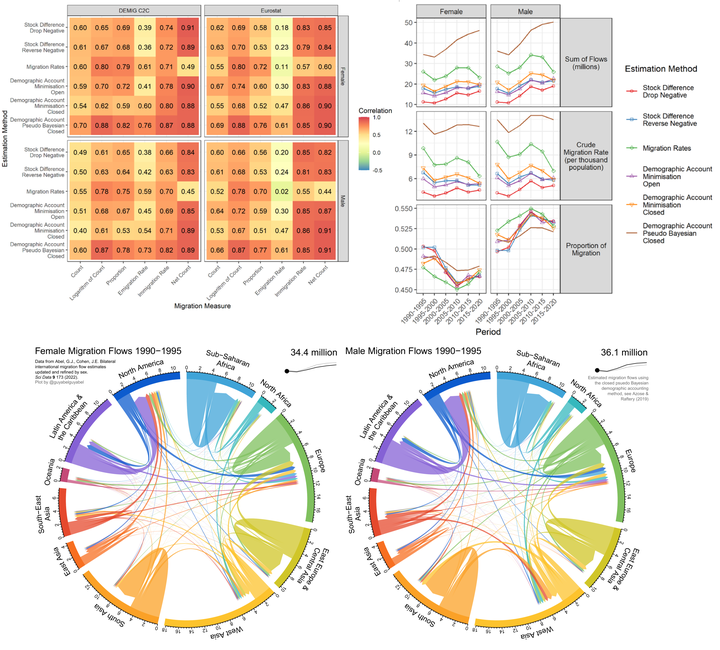
Abstract
Females and males often migrate at different rates. Official data on sex-specific international migration flows are missing for most countries, prohibiting comparative measures to identify and address inequalities. Here we use six methods to estimate male and female five-year bilateral migration flows between 200 countries from 1990 to 2020. We validate the estimates from each method through correlations of several migration measures with equivalent reported statistics in countries that collect flow data. We find that the Pseudo-Bayesian demographic accounting method performs consistently better than the other estimation methods for both female and male estimated flows. The estimates from all methods indicate a decline in the share of female migration flows from 1990–1995 to 2005–2010 followed by a recovery over the decade since 2010.